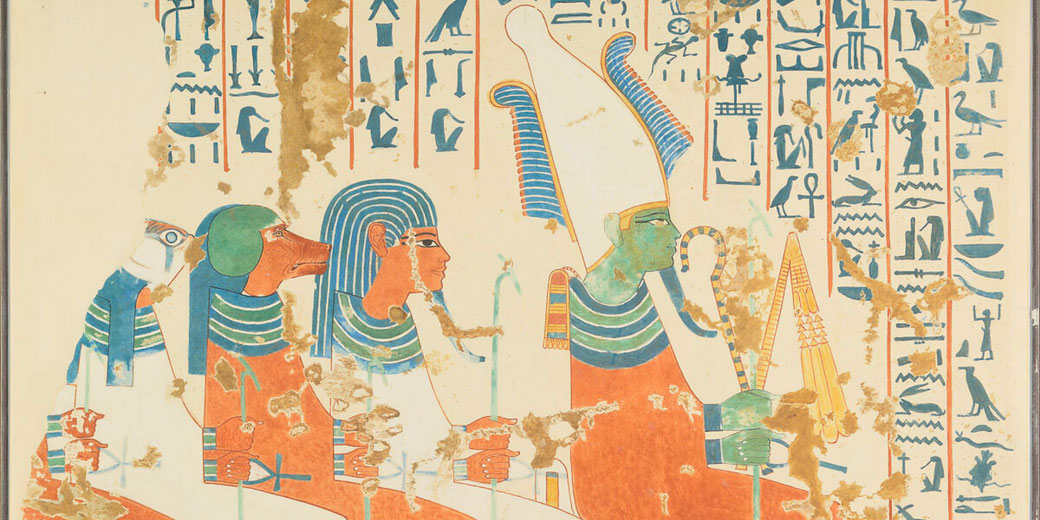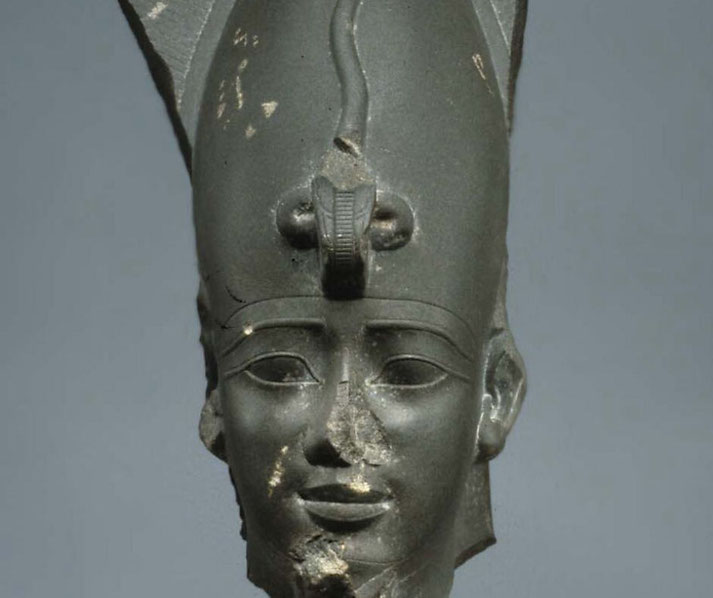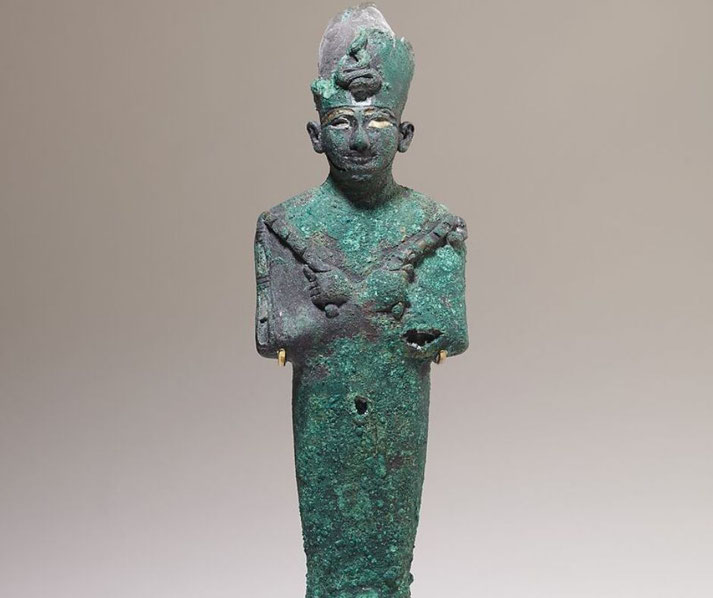Osiris: The mysterious Egyptian god of death and resurrection

Ancient Egyptian mythology is full of strange stories about the gods, but perhaps the most confusing to modern readers is the one about a deity who, after being torn to pieces, returned to life and become the ruler of the afterlife.
This is the ancient story of Osiris, the Egyptian god of resurrection, fertility, and the underworld. Revered as the judge of the dead and the symbol of eternal life, Osiris's legend was central to the ancient Egyptian conception of the afterlife.
But how did a god associated with such dark themes become a symbol of hope and renewal for an entire civilization?
The ancient origins of Osiris in Egyptian history
The worship of Osiris, which began in the Predynastic period of Egypt (before 3100 BCE), evolved significantly over the millennia.
Initially, Osiris was a local god of fertility and agriculture, worshipped in the Delta region.
With the unification of Upper and Lower Egypt around 3100 BCE, Osiris's cult spread throughout the kingdom, absorbing attributes of other deities and becoming a central figure in the Egyptian pantheon.
By the time of the Old Kingdom (c. 2686–2181 BCE), Osiris's role as the god of the dead and ruler of the afterlife was well-established.
The Pyramid Texts, the oldest known religious texts in the world, dating from this era, contain spells that mention Osiris, indicating his importance in the funerary rites of the pharaohs.
These texts illustrate how the pharaohs were associated with Osiris in death, symbolizing their resurrection and eternal life.
The Middle Kingdom (c. 2055–1650 BCE) saw a democratization of the afterlife, with the promise of resurrection and eternal life extending beyond the pharaoh to all Egyptians.
This shift was reflected in the Coffin Texts, which adapted older Pyramid Texts for use in the burials of non-royal individuals.
Osiris's prominence grew during this period, with his myth becoming integral to the beliefs about death and the afterlife for the entire society.
The New Kingdom (c. 1550–1070 BCE) marked the zenith of Osiris's worship.
The construction of massive temples dedicated to him, especially in Abydos, which was considered his cult center and the place of his burial, highlighted his significance.
The Osirian festivals, particularly the Beautiful Festival of the Valley, demonstrated the widespread veneration of Osiris, drawing pilgrims from across Egypt.
During the Late Period (c. 664–332 BCE), the worship of Osiris continued to flourish, even as Egypt faced political turmoil and foreign invasions.
The Ptolemaic Period (332–30 BCE), initiated by Alexander the Great's conquest of Egypt, saw the fusion of Greek and Egyptian religious practices.
Osiris was identified with the Greek god Dionysus, leading to a syncretism that further spread his worship within the Mediterranean world.
The cult of Osiris-Serapis, a Hellenistic fusion of Osiris with the bull Apis and aspects of Greek gods, exemplified this cross-cultural exchange.
The Roman Period (30 BCE–395 CE) witnessed the continued prominence of Osiris, with emperors like Hadrian participating in the Osirian rituals.
However, the rise of Christianity in the Roman Empire eventually led to the decline of the Osirian cult.
By the 4th century CE, the practice of ancient Egyptian religion, including the worship of Osiris, had largely faded, supplanted by the Christian faith.

The violent and disturbing myth of Osiris
Osiris, the benevolent ruler of Egypt, brought civilization and agriculture to his people, teaching them the ways of farming and the laws of society.
His reign was a golden age of prosperity and harmony. However, this peace was shattered by the jealousy and ambition of his brother Set, the god of chaos and the desert, who coveted the throne for himself.
In a plot to seize power, Set tricked Osiris by hosting a lavish banquet in his honor.
The centerpiece of the event was a beautiful chest, crafted to fit only Osiris. Set promised the chest to whoever could fit inside it perfectly.
When Osiris lay down in the chest, Set and his conspirators quickly sealed it shut and cast it into the Nile, where it was carried away to the distant land of Byblos.
There, the chest became embedded in the trunk of a great cedar tree, which was later cut down and used as a pillar in the palace of the king of Byblos.
Isis, the devoted wife of Osiris and goddess of magic and fertility, embarked on a sorrowful journey to find her husband.
Her search led her to Byblos, where, through her cunning and magical prowess, she retrieved the chest and Osiris's body.
Returning to Egypt, Isis hid the chest in the marshes of the Nile Delta. However, Set discovered the chest during a hunting expedition, and in a fit of rage, he dismembered Osiris's body into fourteen pieces, scattering them across Egypt.
Undeterred, Isis set out once more, this time accompanied by her sister Nephthys, to gather the pieces of Osiris's body.
With the help of Anubis, the god of embalming, they reassembled Osiris's body and performed the rites of mummification.
Through her powerful magic, Isis breathed life into Osiris long enough to conceive their son, Horus.
Osiris, now the lord of the underworld, became the judge of the dead, offering the promise of resurrection and eternal life to those deemed worthy.

The birth of Horus marked the beginning of a new chapter in the struggle against Set.
Raised in secrecy, Horus grew strong and wise, eventually challenging Set to avenge his father's death and reclaim the throne of Egypt.
The ensuing battle between Horus and Set was fierce and prolonged, involving various deities and encompassing both the natural and divine worlds.
Ultimately, Horus emerged victorious, restoring order and justice to Egypt.
Why this story was so important to the Egyptians
This foundational myth establishes Osiris as the emblem of resurrection and eternal life.
His death and rebirth were mirrored in the annual flooding of the Nile, which brought fertility to the land, reinforcing his association with growth, renewal, and the cyclical nature of existence.
The duel between Horus and Set, often depicted as a struggle between order and chaos, further cemented Osiris’s legacy, as Horus's victory symbolized the restoration of balance and justice, securing his father's place as the ruler of the afterlife.
His death and rebirth were commemorated in elaborate rituals and became a blueprint for the afterlife, promising resurrection and eternal life to those who followed his teachings and upheld ma'at, the principle of truth and balance.
The Osiris myth, rich with allegory and symbolism, served also as a moral and ethical guide for the ancient Egyptians, illustrating the virtues of kindness, faithfulness, and the pursuit of justice.
How Osiris was depicted in Egyptian religion
Central to Osiris's iconography is his depiction as a mummified king, representing the concept of death and resurrection.
This form, with green or black skin symbolizing rebirth and fertility, respectively, captures his essence as the source of all growth and renewal in the natural world and the afterlife.
In his hands, he often holds the crook and flail, symbols of the shepherd and the agriculturist, denoting his role as a provider of guidance and sustenance, as well as his authority over the land and its people.
Another emblematic feature of Osiris is the Atef crown, adorned with ostrich feathers, signifying sovereignty and divine authority.
This crown, unique to Osiris, underscores his status as the king of the dead and a judge in the afterlife.
The djed pillar, representing stability, durability, and Osiris's backbone, is yet another powerful symbol.
It is frequently featured in rituals and art, serving as a reminder of Osiris's enduring presence and his role in maintaining the balance of the universe.
How did the Egyptians worship Osiris?
The cult and worship of Osiris were central to the religious life of ancient Egypt, from the delta to Nubia, with significant centers at Abydos and Busiris.
These cities became the focal points of pilgrimage, where elaborate temples housed the rituals and festivals dedicated to Osiris.
Among these, the most significant was the annual celebration of the Mysteries of Osiris, a dramatic reenactment of his death, search, and resurrection, symbolizing the regenerative powers of the Nile and the cyclical nature of life and renewal.
This festival allowed the Egyptians to celebrate his rebirth and also reinforce the social and moral order underpinning Egyptian society.
Participants engaged in processions, offerings, and the enacting of rituals that mirrored the mythological narratives of Osiris's life, death, and resurrection.
Such practices ensured the god's favor and, by extension, the fertility of the land and the well-being of the community.
The Osiris cult also emphasized personal piety and the hope for individual resurrection and judgment in the afterlife, with Osiris serving as the benevolent judge who weighed the hearts of the deceased against the feather of Ma'at, the principle of truth and balance.
As a result, the worship of Osiris permeated private devotion and funerary practices.
Tombs and sarcophagi often featured prayers and spells invoking Osiris's protection, demonstrating the belief in his role as the guarantor of rebirth and eternal life for the dead.
What do you need help with?
Download ready-to-use digital learning resources
Copyright © History Skills 2014-2025.
Contact via email
With the exception of links to external sites, some historical sources and extracts from specific publications, all content on this website is copyrighted by History Skills. This content may not be copied, republished or redistributed without written permission from the website creator. Please use the Contact page to obtain relevant permission.





